18 Things You Probably Don't Know About Prohibition
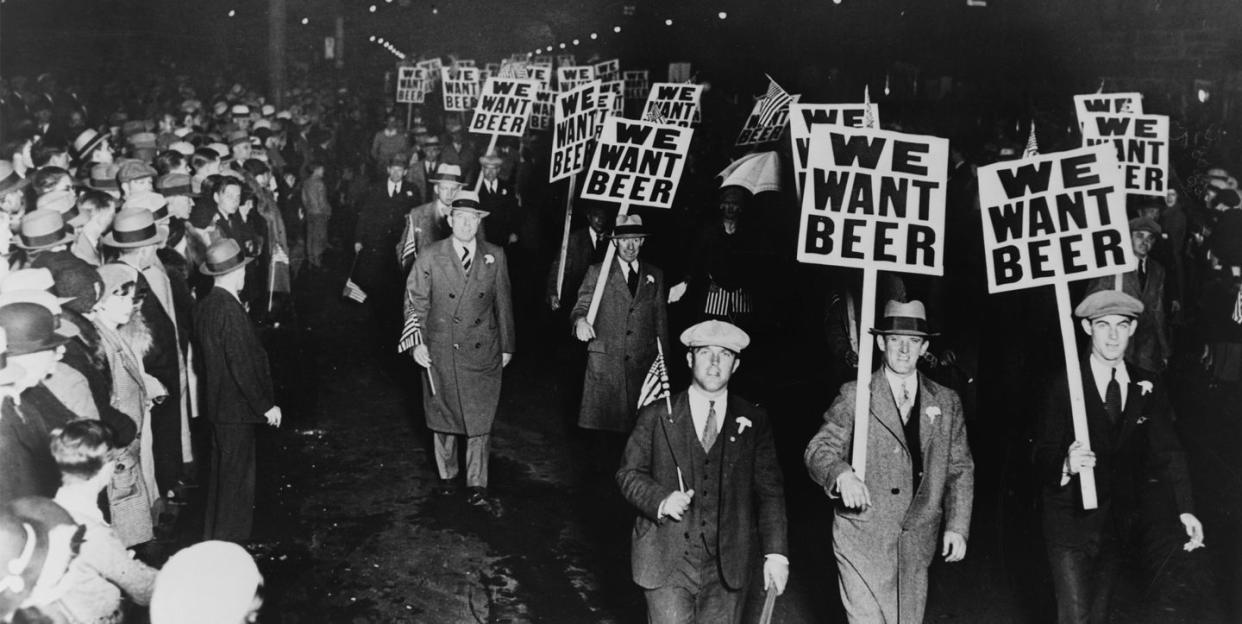
One hundred years ago today, the 18th Amendment to the U.S. Constitution went into effect, banning the manufacture and sale of all alcoholic beverages in the country. We may treat prohibition like a joke today, but it was the result of decades of political crusading and did lead to a longer-term stanching of alcohol use. In fact, there's a lot of surprising stuff packed into just under 14 years of Prohibition. These 18 tidbits just scratch the surface.
🍺 Prohibition Fact #1: At the height of Prohibition, New York City had about 32,000 speakeasies, according to the Mob Museum’s Prohibition exhibit. Compare that to today, when a very saturated 12,000 beer and liquor licenses caused the New York Times to cover a movement to reduce the number of bars in New York. The original Scarface is about Prohibition liquor bootlegging, and the strip of popular smuggling seafront between Atlantic City and New York was called “Rum Row.” Another famous group, the Purple Gang, ran liquor from Canada through the Detroit River. Millions of quarts came up through the Bahamas each year, including whiskey from the U.K.
🍺 Prohibition Fact #2: Temperance crusaders were called Drys, and their opponents were called Wets. People had “dry politics” or, sorry, “wet politics,” exemplified by the 1928 presidential race between Herbert Hoover and Al Smith. By the time temperance was made the constitutional law of the land, the temperance movement was decades old. One group, the Anti-Saloon League, had overtaken the other temperance groups and emerged as the dominant group, lobbying and pressuring politicians to choose prohibitive policies. Herbert Hoover ran on a pro-Prohibition platform.
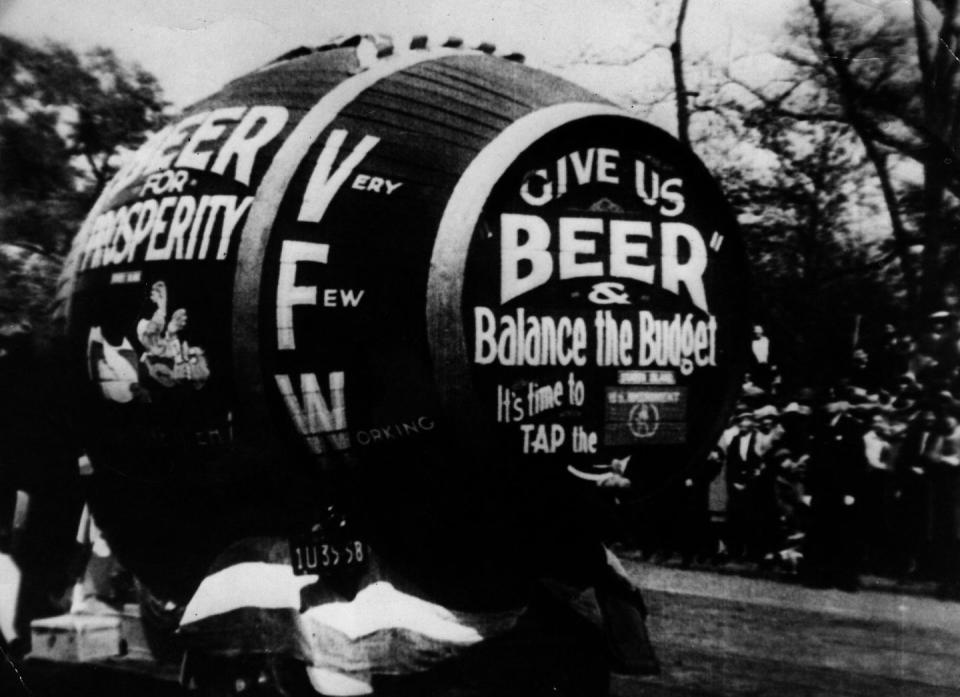
🍺 Prohibition Fact #3: One U.S. state didn’t ever enforce Prohibition, and another was the last to reluctantly repeal Prohibition at the end. Can you guess which is which? Historians say that while law enforcement decided to “team up” local, state, and federal police to enforce Prohibition, the confusion over who claimed what jurisdictions and actions meant that enforcement suffered rather than benefited from the multi-level full court press. The federal government brought in 36 naval warships crewed by 11,000 men to police the high seas. (It was Maryland that never enforced Prohibition, while Mississippi was the last to repeal.)
🍺 Prohibition Fact #4: Many public supporters of Prohibition didn’t themselves abstain. "By the time large numbers of voters were confronted with a choice whether or not to support a prohibitionist measure or candidate for office, public discourse over alcohol had produced a number of prohibitionist supporters who were not themselves abstainers,” temperance historian Jack Blocker wrote in 1997. “That is, they believed that it was a good idea to control someone else’s drinking (perhaps everyone else’s), but not their own."
🍺 Prohibition Fact #5: When Prohibition began, the overall alcoholic beverage industry was the fifth largest employer in the country. The fact that all those people immediately lost their jobs was compounded by the loss of tax revenue from alcohol sales—both of which hamstrung President Herbert Hoover, who didn’t have the public support or financial support to try to pull the country out of a nosedive into the Great Depression. After Prohibition was repealed, the immediate boost to employment was akin to a “jobs program,” writer Daniel Okrent said.
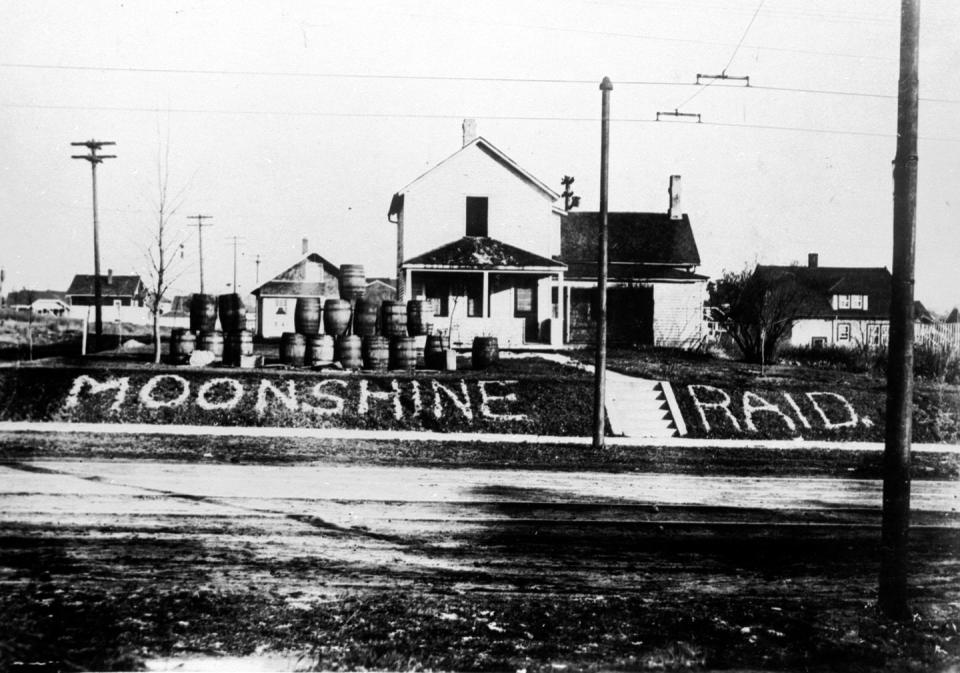
🍺 Prohibition Fact #6: The 18th Amendment prohibits the manufacture, distribution, and sale of alcohol—not the consumption of it. Some historians have called this a policy silver lining, indicating that the government can honor boundaries around what people do in the privacy of their own homes. But asymmetrical criminalization leads to problems for people in the industries it affects, and temperance advocates also didn’t leave any room for moderation. "In one interesting contrast with today's tobacco controversies, prohibition suffered because of the failure of its advocates to make a convincing case for the health risks of alcohol use, as opposed to alcohol abuse,” Ian Tyrrell wrote in 1997.
🍺 Prohibition Fact #7: Many classic American cocktails originate during Prohibition, but the overall suggestion that cocktails as an idea originated during this time is false. (Delightfully, the Snopes page debunking the cocktail myth concludes the truth is “mixed.”) Genuine Prohibition cocktails include the Sazerac, Southside (like a gin Mojito), Gin Rickey, Sidecar, Old Fashioned, Bee’s Knees, and the Highball, which is just a whiskey soda in the now-ubiquitous glass.
🍺 Prohibition Fact #8: One of the best loopholes in Prohibition policy? Catholics and Jewish people were still allowed to have religious wine. Vineyards made “raisin cakes” of concentrated dried grapes that were “packaged with labels reading, ‘Caution: will ferment and turn into wine,’” the Mob Museum explains. Call it a Chianti Pet.
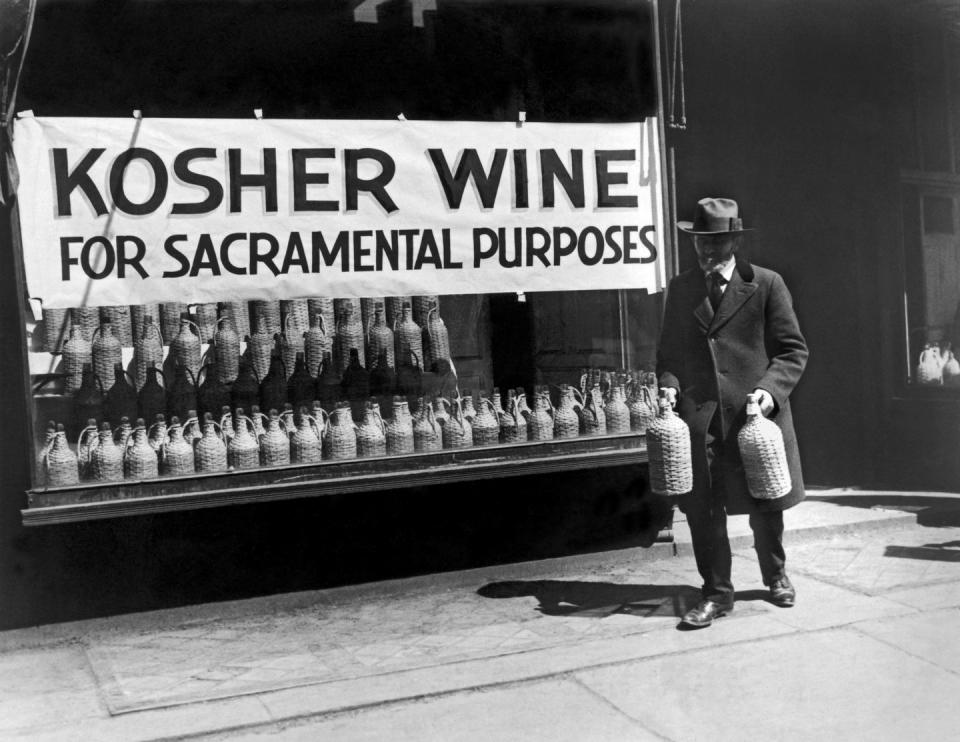
🍺 Prohibition Fact #9: It’s become a nationwide joke that Prohibition “didn’t work,” based on the runaway success of speakeasies and the durability of the popular culture of that time. But Prohibition had a long-term dampening effect on alcohol consumption. "We didn't get back to pre-Prohibition drinking levels until the late 1930s, and we didn't really surpass the most drunken periods of American history until the 1970s. So it did reduce it,” Okrent explained.
🍺 Prohibition Fact #10: Prohibitions of some kind happened in Canada, Iceland, Finland, Norway, and both pre- and post-revolution Russia. That’s in addition to the many Muslim-majority countries that have prohibition laws today or have tried them at times in the past. Today, 10 U.S. states still have at least some dry entire counties, and 17 states still use the “state dispensary” system begun in the immediate aftermath of repealing Prohibition.
🍺 Prohibition Fact #11: In an effort to curb illegal consumption, the U.S. government began poisoning the illegal alcohol supply, believing—or purporting to believe—that this would discourage illegal drinking. Instead, 400 people were killed by the poisons in 1926 and 700 died in 1927. The poisons included ones used to turn regular alcohol into undrinkable “industrial alcohol” (for use as a cleanser or solvent). Originally, smugglers were taking these alcohols and having them filtered and resold, and the government responded by just adding more and more poison, knowing the alcohol was going to reach consumers.
🍺 Prohibition Fact #12: Growth of Walgreens stores exploded during Prohibition because it was legal to sell alcohol as a “medicine,” the Mob Museum explains. Historian Freddie Johnson said in Ken Burns’ Prohibition documentary, “The prescription was the legal way of bringing whiskey into your home. By the time Prohibition was done, doctors had written over 6 million prescriptions.” People staggered which family members were “sick” to correspond with household limits on the number of alcohol prescriptions that could be filled each month.
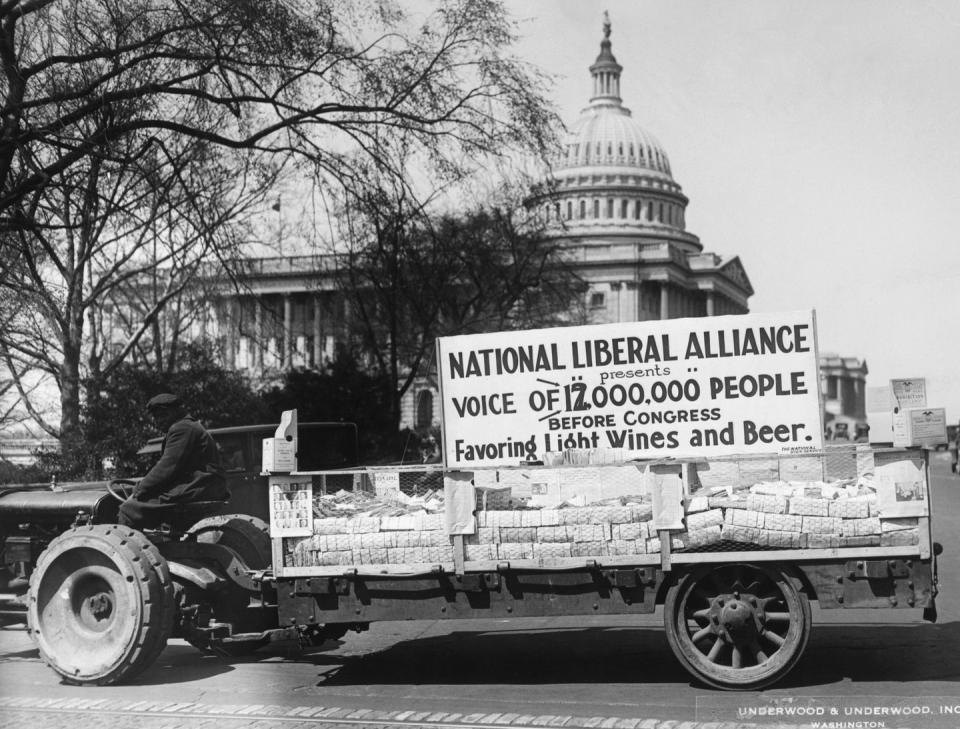
🍺 Prohibition Fact #13: Temperance has a weenie-like reputation in hindsight, but history is written by the victors. At the time, temperance was very popular after decades of increasing public support. Hard liquor had replaced small beer and other much milder drinks during early American history, and especially after the Civil War, women said liquor was causing drastic increases in domestic violence.
"In the mass media before 1920, [p]opular fiction, theater, and the new movies rarely represented drinking in positive terms and consistently portrayed drinkers as flawed characters,” Jack Blocker wrote in 1997. "By 1901, every state required that its schools incorporate ‘Scientific Temperance Instruction’ into the curriculum, and one half of the nation’s school districts further mandated use of a textbook that portrayed liquor as invariably an addictive poison."
🍺 Prohibition Fact #14: Okrent’s says Prohibition had four major legal consequences that get lost in the discourse. "First, and most important, it took away an individual right. Second, it deprived the government of enormous amounts of tax revenue. Third, it created a national crime syndicate. Fourth, you can add in the assault on respect for the law itself." The power of the tax incentive helped to turn political tide all the way against Prohibition, and even an elite law enforcement team called the Untouchables could never get a foothold in enforcing the law.
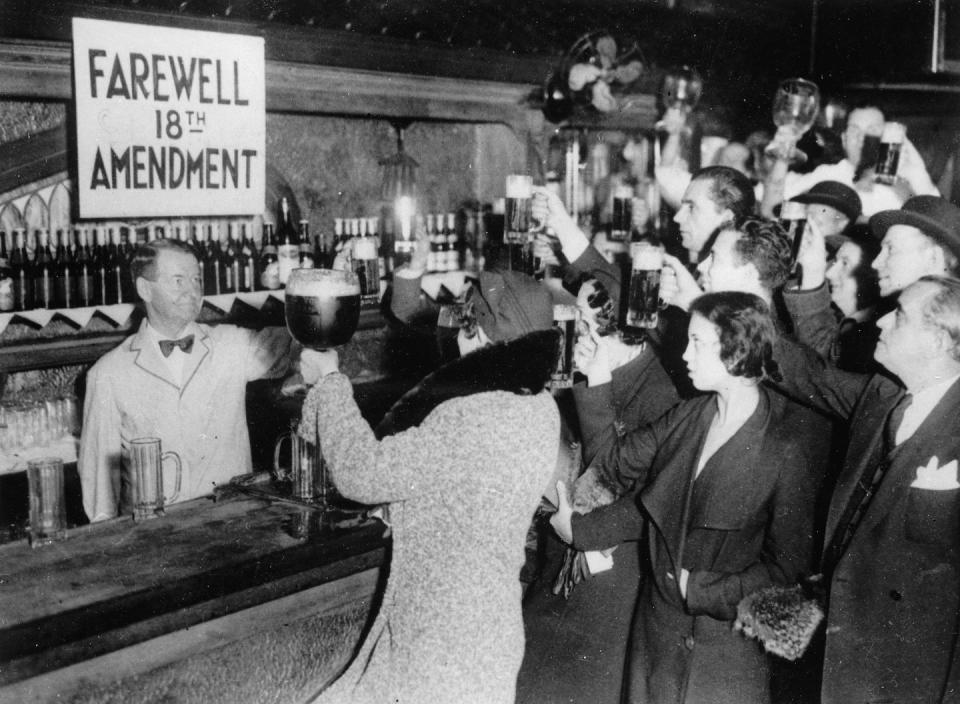
🍺 Prohibition Fact #15: But did Prohibition invent American organized crime? Blocker writes for the NIH, "Although organized crime flourished under its sway, Prohibition was not responsible for its appearance, as organized crime’s post-Repeal persistence has demonstrated." Even during the years of Prohibition, organized crime was still a very small part of an overall crime rate that basically stayed flat. A cottage industry of people who pirated the bootleggers did emerge: called “go-through guys,” they preyed on passing smugglers.
🍺 Prohibition Fact #16: NASCAR began as, uh, informal races between stripped, souped-up, and armored bootlegger cars. This legacy endures today in the way NASCAR vehicles must be “stock” to some extent, with traditional car bodies instead of open-wheeled Indycar or Formula One bodies. The original vehicles had false gas tanks and floorboards that contributed to the $3-billion-a-year smuggling industry. “Many future NASCAR drivers cut their teeth bootlegging illegal moonshine in the 1940s, such as NASCAR Hall of Famer Junior Johnson, who won his learner’s permit by running corn mash hooch before his NASCAR debut in 1955,” the Mob Museum reports.
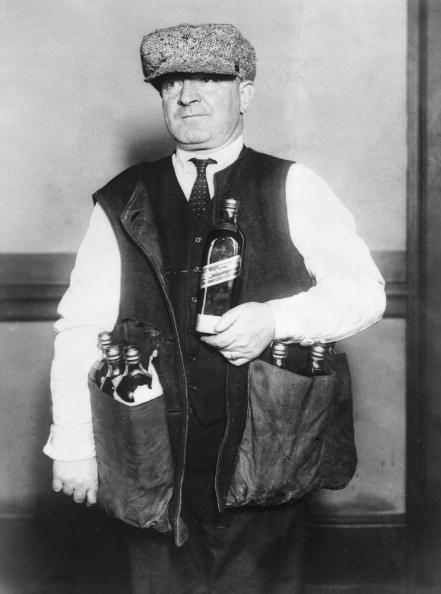
🍺 Prohibition Fact #17: Historian Ian Tyrrell wrote in 1997 that the sudden constitutional movement toward Prohibition happened so fast, and with so little undergirding policy support, that the 18th Amendment actually hurt the temperance movement. "The assumption that prohibitionists believed alcohol consumption would cease with the achievement of the national constitutional amendment's passage is false," he wrote in the journal Addiction. "Thus alarmist assumptions about the sudden effects of decriminalization of some drugs are likely to be as off-base as myths about the record of alcohol prohibition."
🍺 Prohibition Fact #18: The temperance movement seeded many wild myths that had a sheen of sciencey-ness during a time when people weren’t certain what to believe. These include that fake Madeira wine was made by steeping cockroaches in regular wine; that the brains of longtime drinkers were flammable, demonstrated during autopsies; that lifelong drinkers had livers that swelled to upwards of 25 pounds; that just the smell of alcohol could cause birth defects; and, most bafflingly, that alcohol could turn your blood to water. (What is that, alcoh-lmy?)
You Might Also Like


